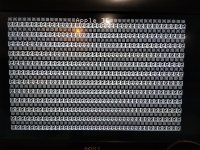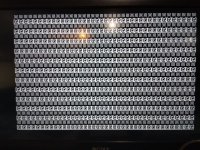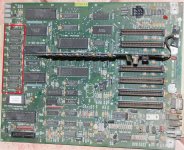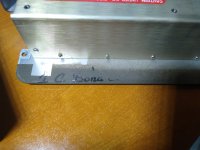DontFryTomato
Member
- Joined
- Feb 8, 2023
- Messages
- 15
Hello everybody,
I just got an Apple lle that does not boot. I've read about the garbage screen problem, including here, but what is on my screen (attached) is a systematic pattern, which also includes "Apple ll". The pattern does not change after power-cycling. The computer initializes (there is the beep) but does not show the prompt. It reacts to control-open apple-reset (there is the beep again), but no other keys as far as I can tell. It does not try to spin the floppy drive. The behavior is the same with all the extension cards removed. I have read about reseating all the chips but have not tried this yet, hoping that maybe somebody can narrow down the list of potential culprits. Thank you!
On a separate note, coming from the world of PCs, I watched with disbelief the previous owner, who thought that the problem is the floppy drive card, taking it out of the slot and putting it back with the power on. The apple didn't care, or at least showed no sign of distress. Is this how it is supposed to be done in the Apple world?
I just got an Apple lle that does not boot. I've read about the garbage screen problem, including here, but what is on my screen (attached) is a systematic pattern, which also includes "Apple ll". The pattern does not change after power-cycling. The computer initializes (there is the beep) but does not show the prompt. It reacts to control-open apple-reset (there is the beep again), but no other keys as far as I can tell. It does not try to spin the floppy drive. The behavior is the same with all the extension cards removed. I have read about reseating all the chips but have not tried this yet, hoping that maybe somebody can narrow down the list of potential culprits. Thank you!
On a separate note, coming from the world of PCs, I watched with disbelief the previous owner, who thought that the problem is the floppy drive card, taking it out of the slot and putting it back with the power on. The apple didn't care, or at least showed no sign of distress. Is this how it is supposed to be done in the Apple world?






